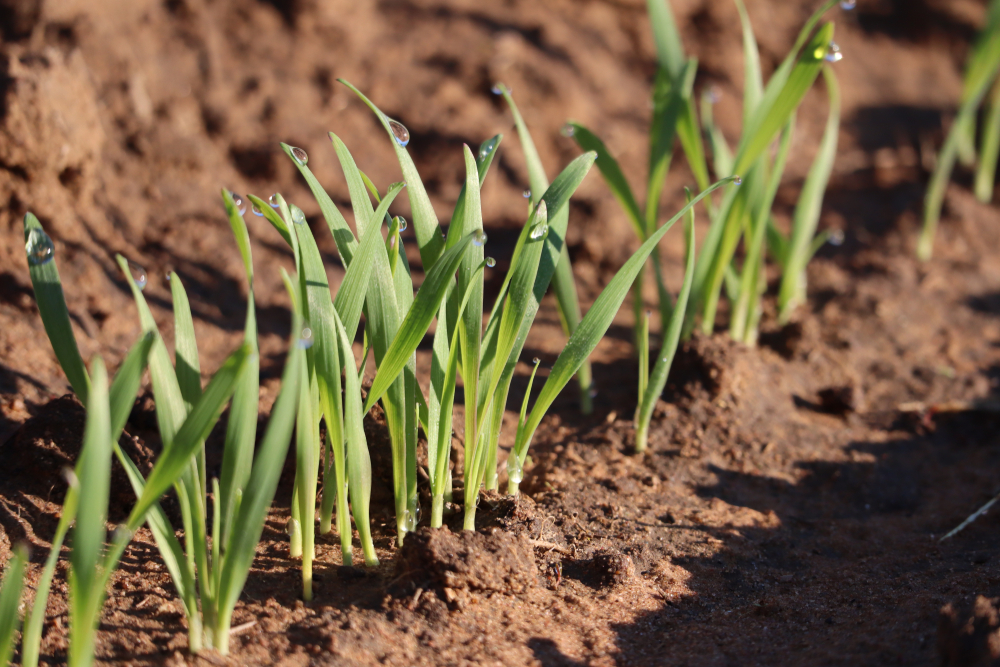To grow crops, you need consistent rainfall and warm temperatures. If your land has less than 25 inches of rainfall, it will be very difficult to plant anything in your food plots. You’d better focus on the natural forage of your land to help sustain deer populations.
Land that gets enough rainfall can be planted with plenty of fruit trees and crops such as oats, peas, and chicory for your white-tailed deer.
As for temperatures, very little grows when the soil is frozen. Seeds need warm temperatures to germinate, or they remain dormant.
There are wild variations across the United States when it comes to rainfall and temperatures, even within a single state. In Texas, for example, the eastern part gets more sustained and consistent rainfall while the western part is more arid. South Texas, in contrast, gets most of its rainfall during hurricanes.
Before you decide to plant your food plot or wildlife orchard, you must test your soil to understand what type of soil you have and its nutrient content.
Once you know what your land can sustain and how much rainfall you get, you are ready to plant your food plot.
What Do Deer Eat?
Deer love fruit such as mulberries and pears. They will also happily browse plants as a food source. In addition, deer love acorns.
Besides all these, there are two more types of crops that deer like: cereal grains and legumes.
Regarding grains, oats are their preferred food source, with wheat coming second.
Oats are filled with sugars and carbohydrates, both of which deer greatly appreciate. Oats are also easy to digest, which is another great benefit to deer.
Finally, oats contain protein that helps deer build their muscles and have the energy to grow. Females need protein to nourish their young and produce milk for their fawns.
When it comes to legumes, peas, cowpeas, soybeans, and beans are the most common, along with shade-tolerant legumes such as clover and alfalfa. These crops require consistent rainfall, which makes them less than ideal for plots where rainfall is not secure. Deer also like chicory, which is a perennial.
What Type of Crop Is Adapted to Low-Rain Areas?
For low-rain areas, the most solid, reliable, and dependable crop is oats. Deer love them and oats perform very well across the United States, even in areas that have low rainfall levels.
Growing Winter Oats in Texas
In Texas, winter oats are planted in late summer to early fall. Even though they have a large seed, they are not planted deeply: one to one-and-a-half inches are usually enough. Depth matters because, the deeper you plant, the more moisture the seed will find.
Mid-fall is the best time to plant oats, particularly after some rainfall when the soil has gained moisture and can sustain the germinating oat seeds.
Once planted, the oats seeds germinate and mature within 60 days, which means they are ready to eat by mid-to-late fall in Texas.
Winter oats provide enough carbohydrates to deer to survive when other food sources such as mast are long gone.
Another benefit of oats is that they are grazing-resistant. No matter how much deer graze oats, this amazing cereal grain simply can’t get overgrazed.
Finally, one more advantage of oats is that they don’t like poorly drained soil or too much moisture. This feature makes them ideal for areas with low rainfall. As long as the soil has a little moisture and there is some rainfall during the germination period, oats will happily grow.
Growing Oats in the Northern United States
In northern states, temperatures are much lower than in the South. Oats should be planted in late summer, ideally in August, after a good rainfall has left the soil moist.
Winter oats are more cold-hardy than spring oats and provide superior grazing. However, they will still die after a series of hard freezes.
Thankfully, deer will have had plenty of time to graze by the time the first frost and snow cover the fresh oat. Perhaps surprisingly, snow can serve to protect the oats underneath. Deer can dig in the snow to uncover them—if oats are there, deer will find them and graze them, even under the snow.
How about Chicory?
Deer like chicory. While chicory needs water to germinate and establish itself, it is very drought-tolerant after that. Food plots with areas of low or unreliable rainfall could benefit from chicory for deer.
Chicory grows very well in eastern Texas if your land can deliver enough moisture when planting it. You then have a perennial that comes back every year for at least five to seven years.
Oats Are a Good Deer Crop for Low-Rain Areas
If you have a food plot on your land, we suggest you plant oats. Deer love them and they perform well even with unreliable rainfall.
Winter oats will grow well in southern States until late fall and provide grazing opportunities to deer.
In northern States, deer will have time to graze tender winter oats in early fall before snow covers the crop. Even then, deer can dig in the snow to unearth their favorite crop.
Wildtree for Your Deer-Preferred Orchard
Are you wondering what kind of vegetation you need for your deer-preferred orchard?
Contact Wildtree online or call us at 346-707-6023 and we will guide you toward the right combination of trees and plants for your soil and hardiness zone. We offer free shipping on all orders and a 10% discount on orders over $1,000. Get 40% off when you pick up your order!


